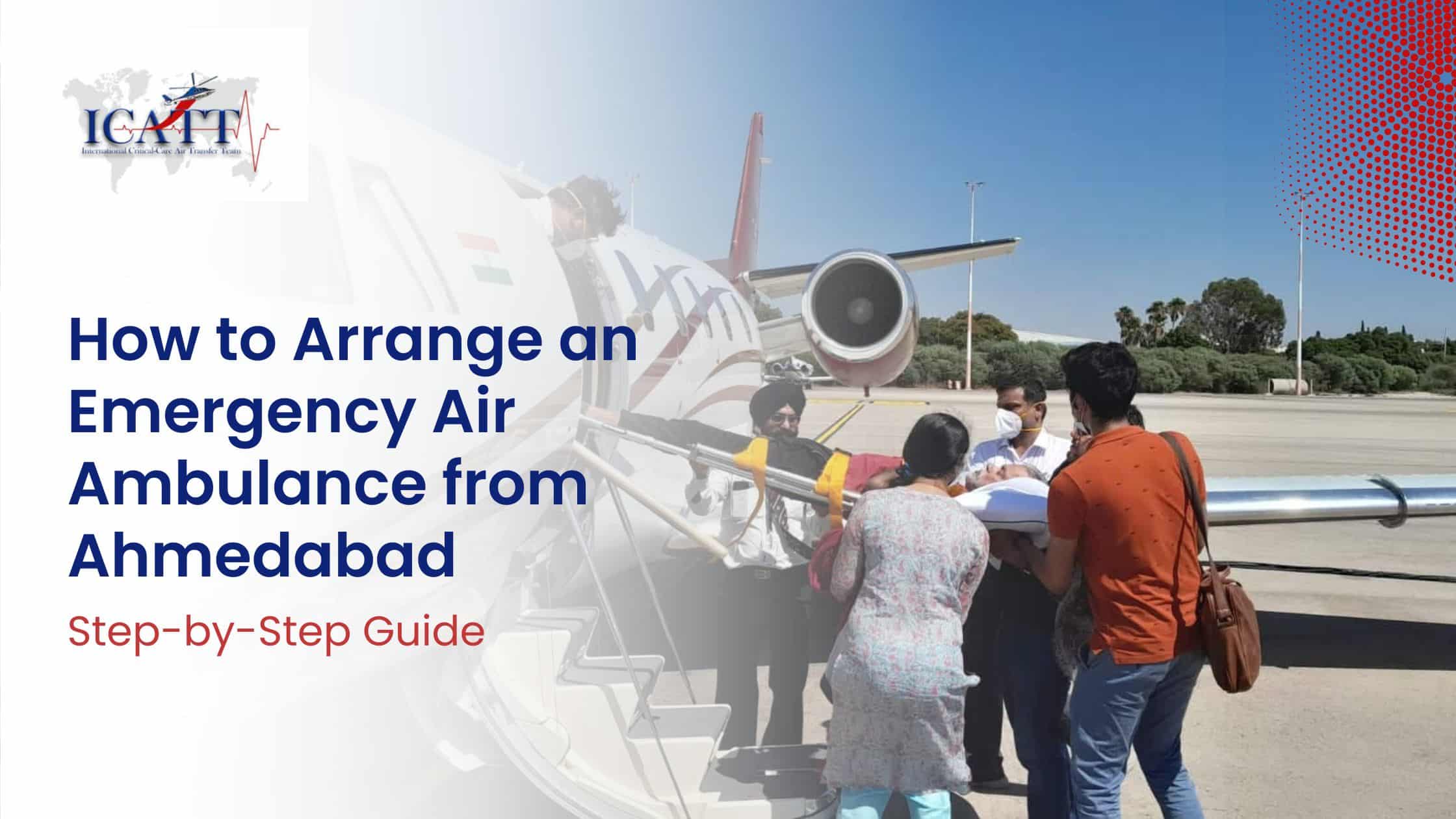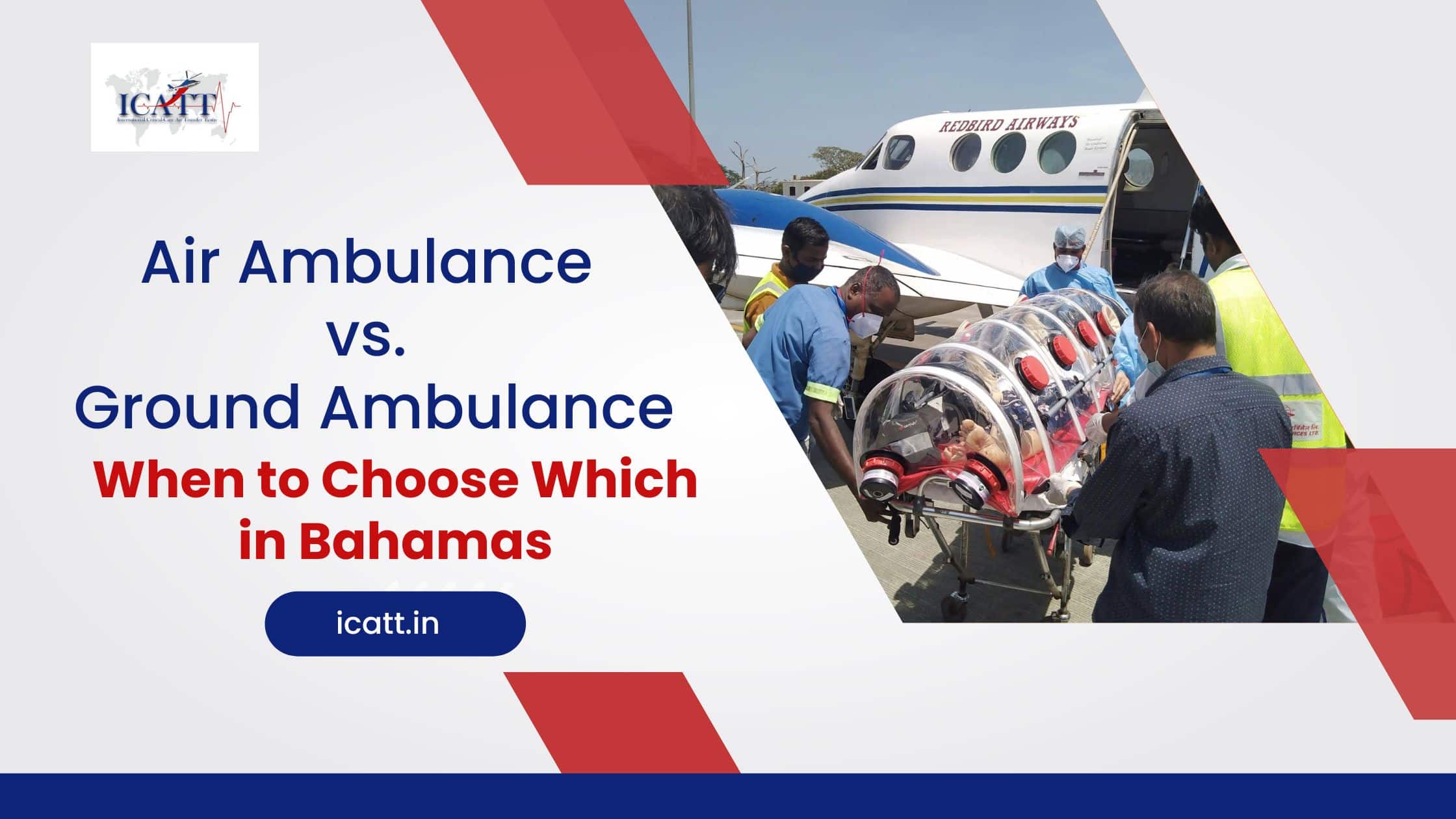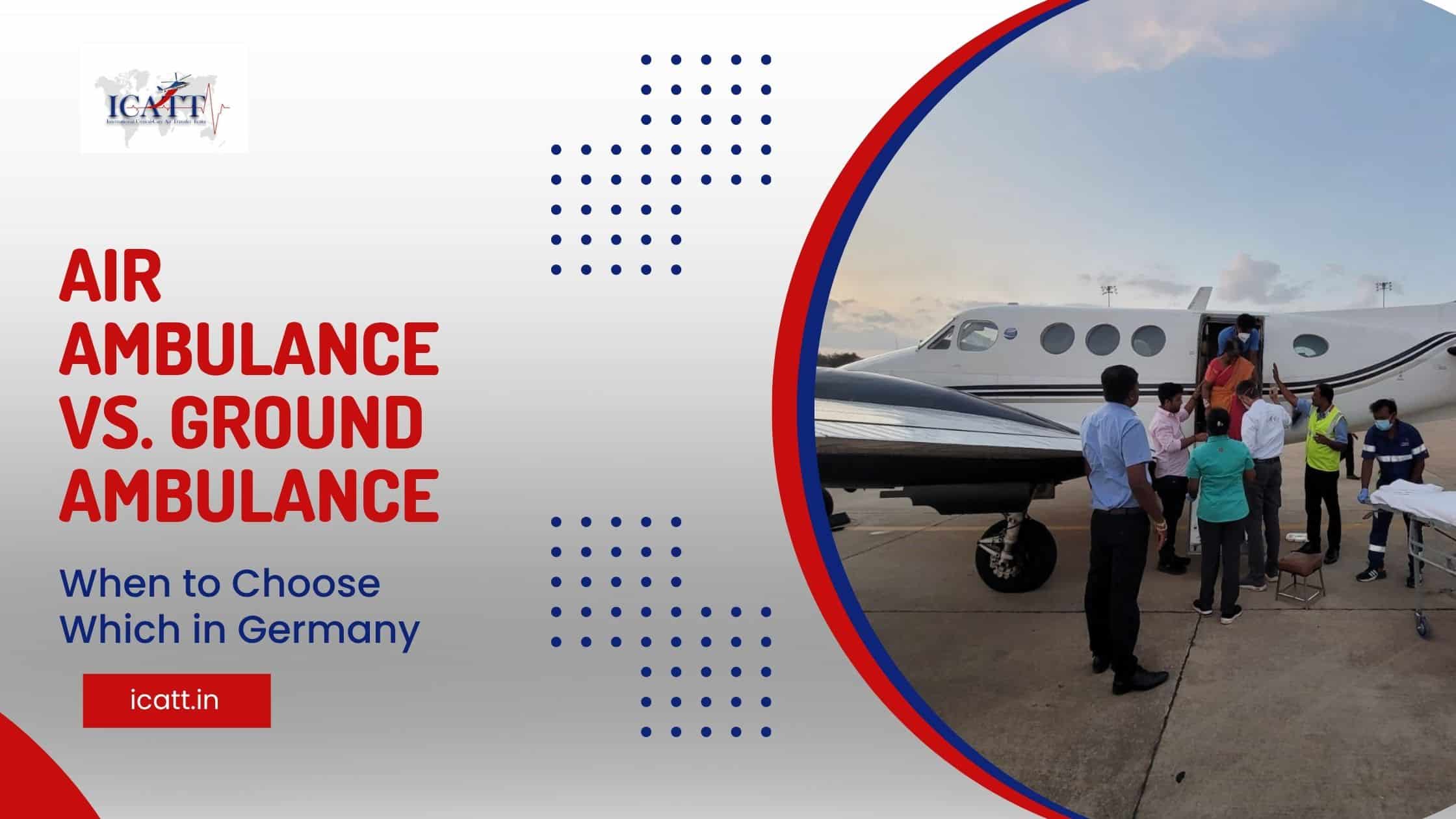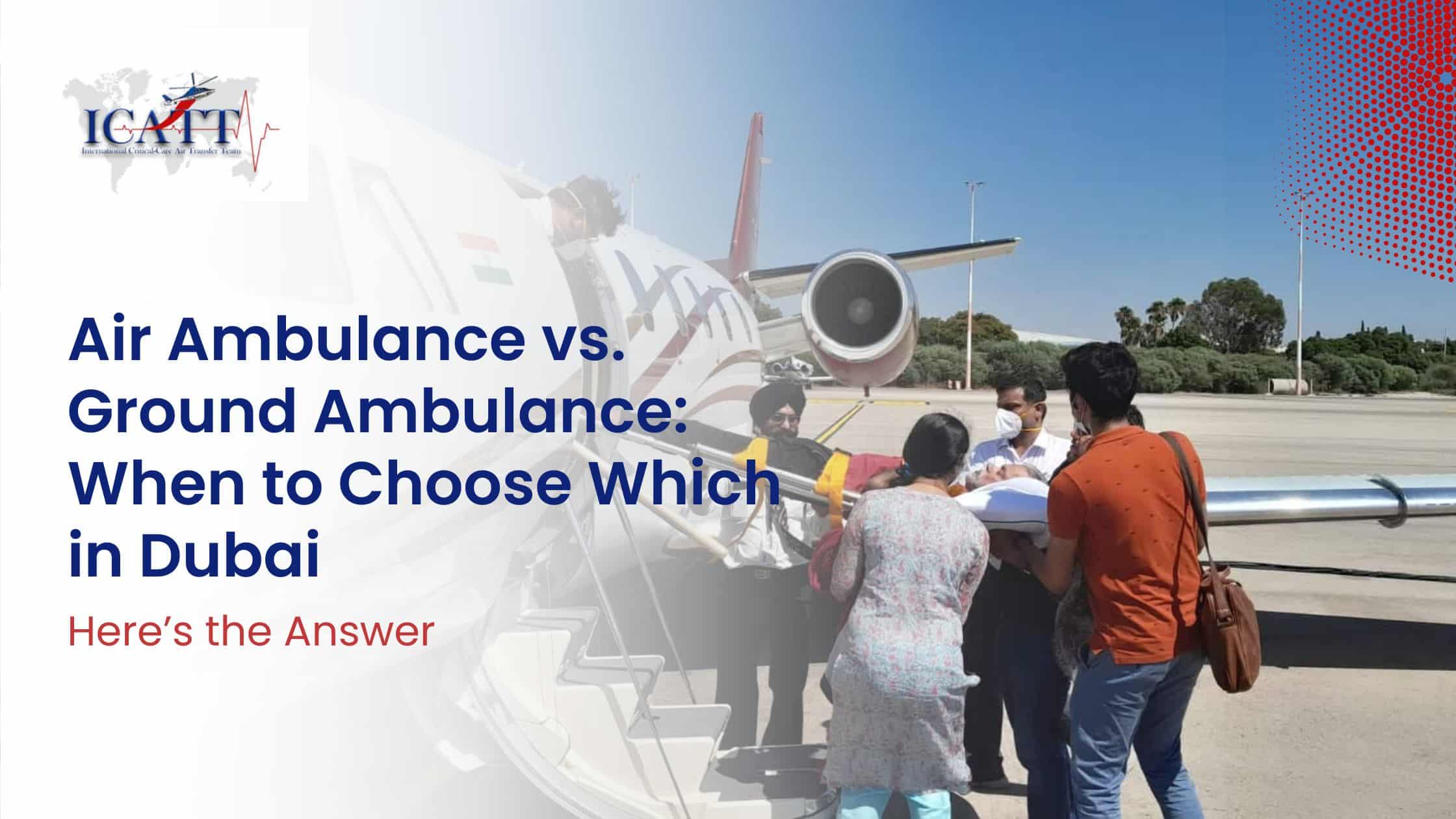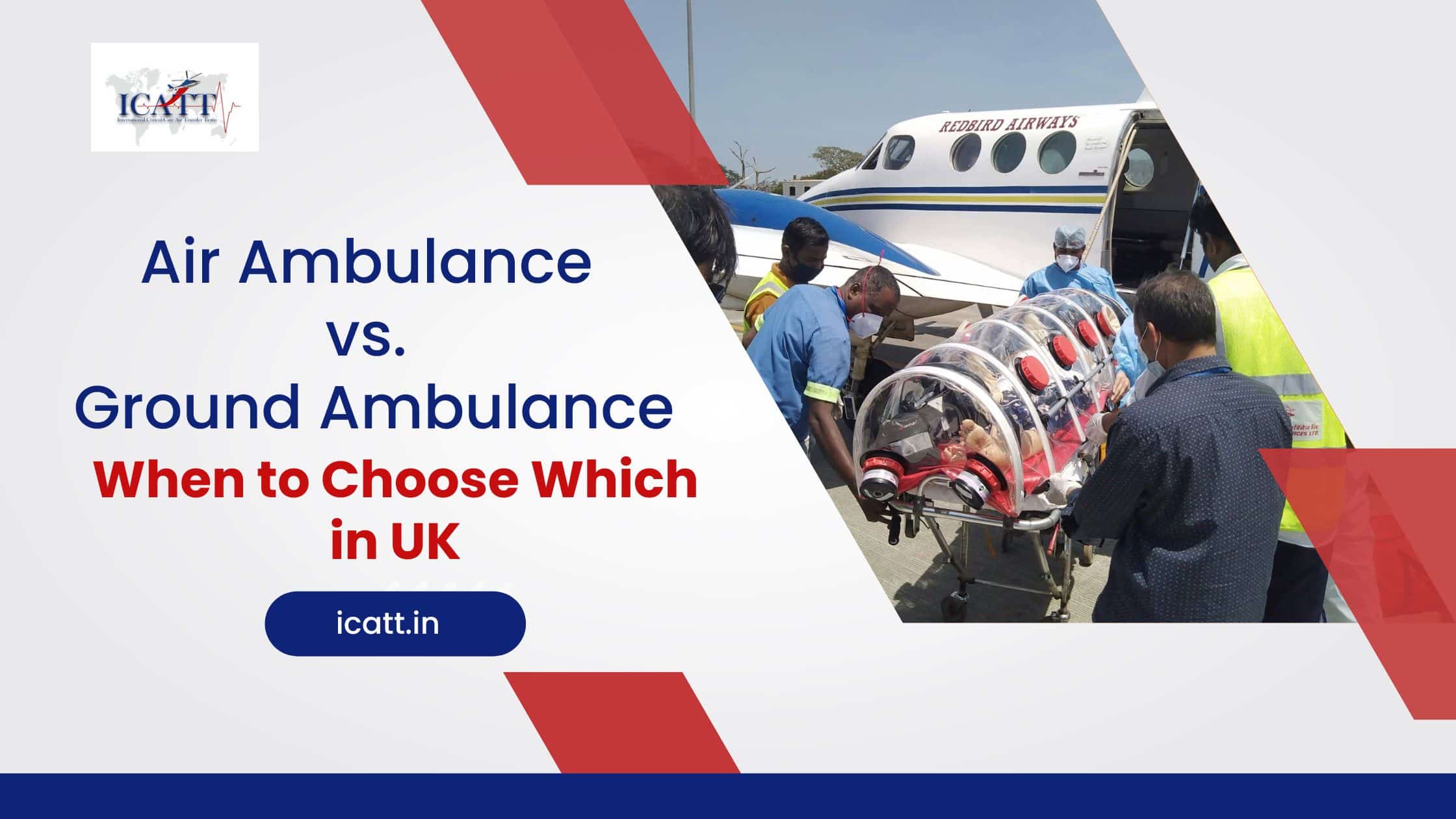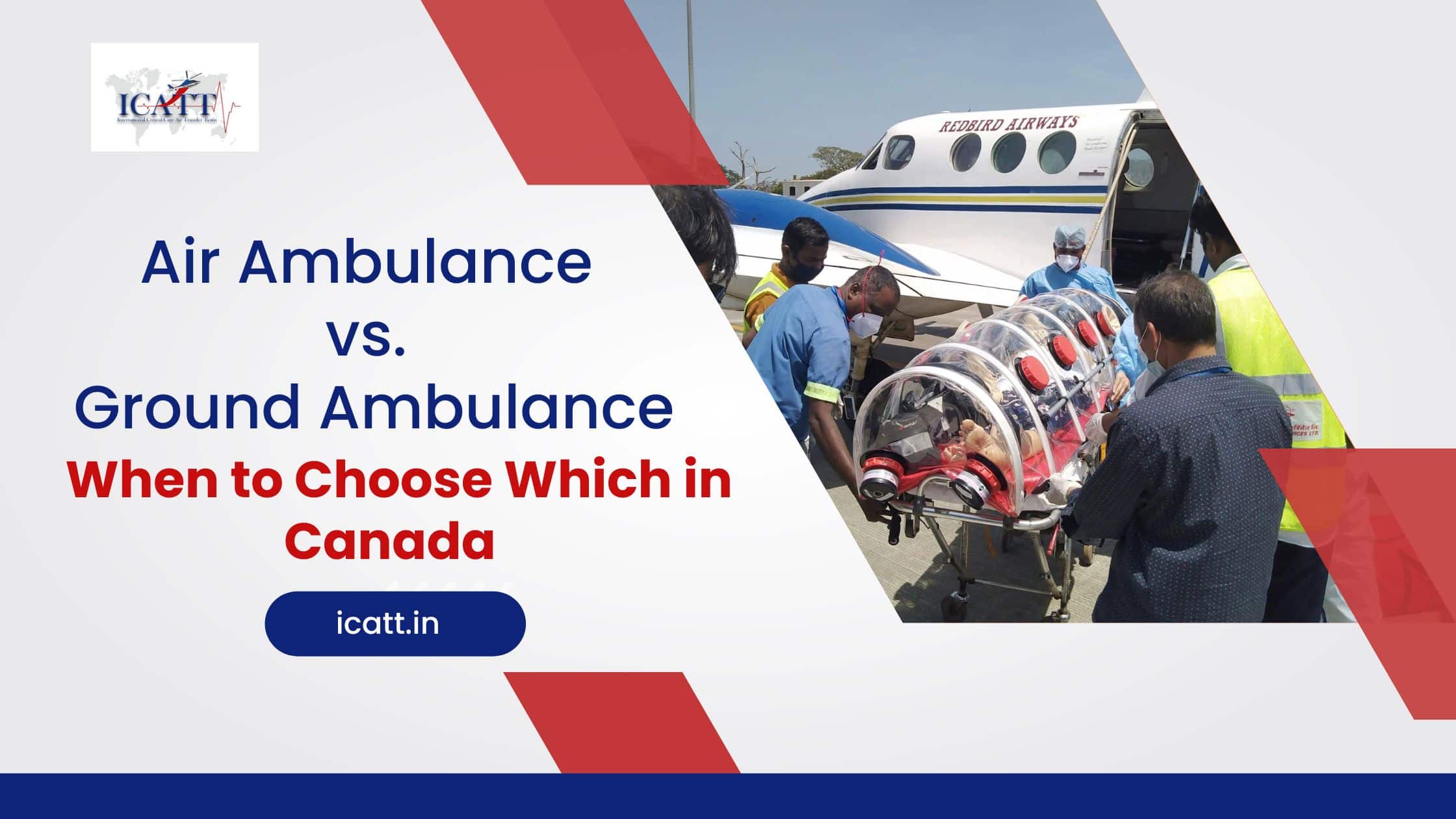In today’s interconnected world, the need for long-distance medical air flight has become increasingly common. Whether it’s for specialized treatment in another city or repatriation after an accident, patients often need to be transferred over long distances in a medically safe and comfortable environment. For individuals who are not critically ill but still require medical assistance during their international air ambulance journey, commercial stretcher transfers have emerged as a highly viable and affordable option.
What Are Commercial Stretcher Transfers?
A commercial stretcher transfer allows a patient to travel on a regular commercial flight, but instead of sitting in a standard seat, they are accommodated on a stretcher. This is an ideal option for patients who are stable but require medical air flight and monitoring during the journey. Commercial stretcher transfers are widely used for non-emergency medical repatriation, post-surgical travel, or transferring patients from one country to another for specialized medical treatment.
In most cases, commercial airlines will allocate a section of the cabin, often at the rear, where a stretcher is installed. A medical air ambulance team, which typically includes a doctor or paramedic, accompanies the patient throughout the journey to ensure their safety and provide any necessary care. This setup offers a comfortable, cost-effective solution that meets medical needs without the high expenses associated with private air ambulances.
Why Opt for a Commercial Stretcher Transfer?
For many patients and families, the decision to opt for a commercial stretcher transfer comes down to affordability and accessibility. While private air ambulance services provide dedicated aircraft for patients, these services can be prohibitively expensive, especially for long-distance international travel. Commercial stretcher transfers, on the other hand, offer a significantly lower-cost alternative because they utilize scheduled commercial flights rather than private aircraft.
Some of the key advantages include:
- Cost-Effectiveness: Commercial stretcher transfers can be up to 70% less expensive than booking a private air ambulance. This makes it a much more feasible option for individuals and families who need to manage medical travel within a budget.
- Medical Supervision: During the flight, patients receive the same level of care as they would on a private air ambulance. A specialized medical air ambulance team, often comprising physicians and paramedics, ensures the patient’s well-being throughout the journey.
- Seamless Coordination: Leading providers like ICATT handle all the logistics, from liaising with the airline to organizing medical clearance, ensuring that the entire process is smooth and hassle-free for patients and their families.
- International Availability: Many commercial airlines offer stretcher transfer services on international routes. With global providers like ICATT International Air Ambulance Services, patients can travel across borders efficiently while receiving medical care.
The Process of Arranging a Commercial Stretcher Transfer
Arranging a commercial stretcher transfer requires thorough planning and coordination between multiple parties, including airlines, medical providers, and the patient’s family. Here’s a breakdown of the typical steps involved:
- Medical Assessment: The process begins with a detailed medical assessment of the patient to determine whether they are fit for travel. ICATT’s expert medical team evaluates the patient’s condition to ensure that a commercial stretcher transfer is a safe option. This includes assessing the patient’s vitals, stability, and oxygen requirements, as well as any potential risks that might arise during the flight. For patients requiring medical transfers, ICATT offers the expertise of FAM Doctors who ensure safe and reliable bedside-to-bedside transfers. This comprehensive service includes everything from the patient’s initial pickup to the final handover at the destination, guaranteeing seamless, continuous medical care throughout the journey.
Additionally, ICATT can accommodate patient transfers in both business and first-class settings, offering comfort and privacy suited to the patient’s needs. This approach allows institutions and families to opt for safe, flexible transfer options that prioritize patient comfort and peace of mind.
- Booking and Logistics: Once the patient is deemed fit for travel, the next step involves booking the flight and liaising with the airline. Airlines require advance notice for stretcher transfers because they need to make modifications to the seating arrangement to accommodate the stretcher. In many cases, up to six seats may be blocked off to create enough space for the patient and the medical team.
- Medical Clearance: Before the journey, the airline will request medical clearance, which typically involves submitting medical reports and details about the patient’s condition. This is necessary to ensure the patient’s safety and that the airline is aware of any specific medical needs. ICATT facilitates this entire process to ensure a smooth approval process.
- Pre-Flight Arrangements: Prior to the journey, ICATT’s team will coordinate with the airport authorities and ensure that ground arrangements are made for a seamless bedside-to-bedside transfer. This includes arranging for ground ambulances to transport the patient to and from the aircraft and ensuring that the medical team and equipment are ready for the flight.
- In-Flight Care: During the flight, the patient is continuously monitored by the medical team. Equipment such as oxygen cylinders, cardiac monitors, and emergency medical kits are on hand to address any potential issues that may arise. The team ensures that the patient is comfortable, stable, and well-cared-for during the flight.
- Post-Flight Arrangements: Upon arrival, ICATT’s medical team coordinates the patient’s transfer to the destination hospital or home. This may involve ground ambulance transport, ensuring that the patient receives appropriate care and attention throughout the journey.
Factors to Consider When Opting for a Commercial Stretcher Transfer
While commercial stretcher transfers are an excellent solution for many patients, it’s important to consider certain factors before choosing this option:
- Patient’s Condition: The patient’s medical condition is the primary factor in determining eligibility for a commercial stretcher transfer. Patients must be stable and not require emergency medical intervention during the flight. A thorough medical assessment by experts like ICATT will help determine if this is the right option.
- Flight Duration: Long flights may pose additional risks, especially for patients with respiratory issues or other medical complications. It’s important to consider the flight duration and the patient’s ability to tolerate extended travel times.
- Costs: While commercial stretcher transfers are more affordable than private air ambulances, they still involve significant costs. It’s important to factor in the cost of blocking multiple airline seats, medical escort fees, and additional logistical expenses such as ground transportation and medical equipment.
- Airline and Route Availability: Not all airlines or routes offer stretcher transfer services. Working with a provider like ICATT ensures that you can access global networks and receive help finding flights that accommodate medical transfers.
ICATT: Leading the Way in Affordable Medical Transfers
As Asia’s No. 1 International Air Ambulance Service Provider, ICATT has revolutionized medical travel by offering cost-effective, reliable, and fully coordinated air transfer services for patients worldwide. ICATT’s team of experts specializes in arranging commercial stretcher transfers, ensuring that patients receive high-quality care without the financial burden associated with private air ambulance services.
Here are just a few of the comprehensive services ICATT provides:
- Rapid Response Air Ambulance Worldwide: For patients who need critical care during emergency bedside-to-bedside transfers.
- Specialized Neonatal and Pediatric Air Transport: Tailored services for newborns and young children who require specialized medical care during transit.
- Critical Organ Transport Services: Ensuring that organs are transported safely and within crucial timeframes for life-saving procedures.
- Expert Medical Escort Services: Professional medical supervision on commercial flights for patients who require assistance but do not need a full stretcher setup.
Conclusion
Commercial stretcher transfers offer a practical, affordable, and safe solution for long-distance medical travel. By utilizing regular commercial flights, patients can receive the care they need without the high costs associated with private air ambulances. Providers like ICATT ensure that the entire process, from medical assessment to in-flight care, is seamless and professional, offering peace of mind to patients and their families.
Whether you or a loved one needs medical travel assistance, consider commercial stretcher transfers as a cost-effective alternative that guarantees the highest standards of care. With ICATT’s experience and expertise, your journey will be in the safest hands possible.

